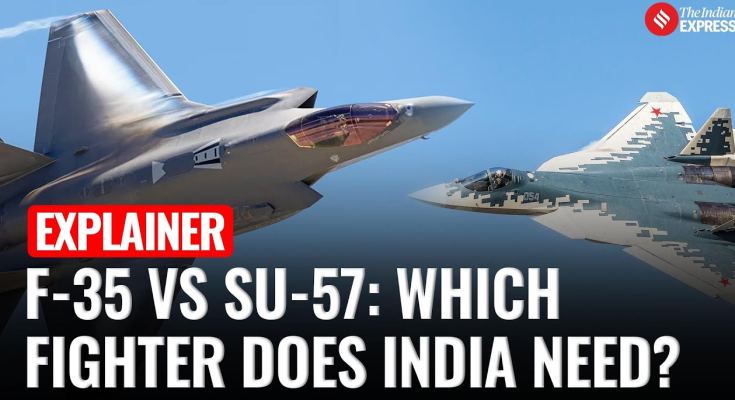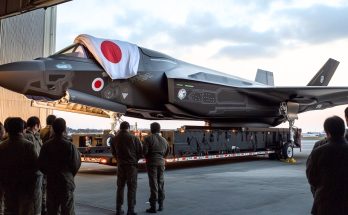Aero India 2025, one of the most anticipated defense exhibitions in Asia, will likely be a stage for significant discussions and displays of cutting-edge military technology. Among the star attractions will be the F-35 Lightning II, developed by Lockheed Martin, and the Sukhoi Su-57, Russia’s fifth-generation stealth fighter. Both jets are designed to dominate the skies, but when considering which is a better fit for the Indian Air Force (IAF), it’s essential to weigh various factors such as technology, performance, strategic alignment, and geopolitical considerations.
F-35 Lightning II
The F-35 is the world’s most advanced multirole stealth fighter, developed by the United States. It is available in three variants—F-35A (conventional takeoff and landing), F-35B (short takeoff and vertical landing), and F-35C (carrier-based). The F-35 is renowned for its cutting-edge stealth features, advanced avionics, and sensor fusion capabilities, which allow it to operate in contested environments while remaining largely undetected.
For the Indian Air Force, the F-35 offers unparalleled capabilities. Its advanced sensors, including the AN/APG-81 AESA radar and Distributed Aperture System (DAS), provide superior situational awareness and the ability to detect threats at long ranges. The aircraft’s stealth technology, coupled with its ability to conduct both air-to-air and air-to-ground missions, makes it a formidable asset for modern warfare. Additionally, the F-35’s interoperability with allied forces, particularly the United States and NATO, would provide significant advantages in joint operations.
However, the primary obstacle for India is the cost and the geopolitical implications of acquiring F-35s. The aircraft is expensive, with a price tag that exceeds $80 million per unit, and its sale to India is politically complicated due to the U.S.’s strategic alliances. Moreover, as a member of the Russia-India-China (RIC) triangle, India maintains strategic ties with Russia, making a shift toward U.S. fighter jets more politically sensitive.
Sukhoi Su-57
The Su-57, Russia’s flagship stealth fighter, is designed to compete with the F-35 and other fifth-generation jets. The Su-57 combines stealth, supercruise, advanced avionics, and agility, making it a potent threat in air combat. It features advanced composite materials for reduced radar cross-section, thrust vectoring engines for enhanced maneuverability, and a highly advanced radar system.
For the IAF, the Su-57 presents a compelling option. India has a longstanding relationship with Russia, with the Su-30MKI and other Russian-made aircraft forming the backbone of its air force. This deepening defense cooperation offers India an opportunity to continue leveraging its existing relationships, training programs, and infrastructure while gaining access to cutting-edge technology. Additionally, Russia’s willingness to transfer advanced technologies, including avionics and weapons systems, provides India with a greater degree of autonomy in maintaining and upgrading its fleet.
However, the Su-57’s track record is still developing. While it boasts advanced specifications, it has yet to undergo extensive combat operations. The aircraft has faced delays in production and has not been tested in as many real-world scenarios as the F-35, which could be a concern for the IAF. Moreover, some analysts question its true stealth capabilities, given Russia’s history of overestimating its defense technology.
Which is a Better Fit for the IAF?
The decision between the F-35 and Su-57 hinges on a range of factors beyond just technological prowess. The F-35 offers advanced stealth, cutting-edge sensors, and proven performance in various combat environments, but its cost and the U.S.’s strategic interests may complicate its acquisition. The Su-57, on the other hand, fits into India’s established defense ecosystem, with strong ties to Russia and the potential for greater technology transfer and customization.
In terms of raw capability, the F-35 is the more advanced fighter, but considering India’s geopolitical strategy, budget constraints, and existing defense infrastructure, the Su-57 may be a more practical and politically viable choice in the near term. Ultimately, the IAF’s decision will be influenced by a combination of operational needs, political considerations, and long-term defense strategy.



